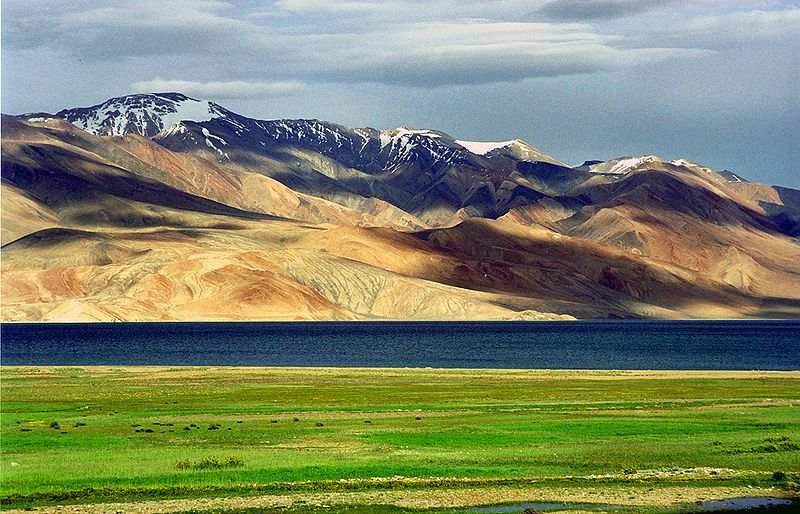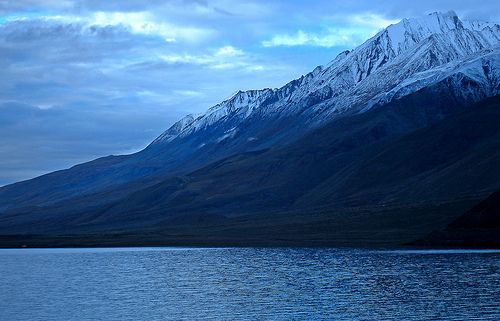From Africa to Asia: Paco was told to visit the Himalayas
In this topic, we will study the indirect or reported speech in detail. We will pay special attention to statements and orders or commands, since reported questions will be looked at in topic 4.
Apart from that, it is important to mention that not all verbs in English have the same structure within a sentence, so, we will study common verbs in English that are followed by a gerund or by a "to" infinitive. Quite often, it is thought that these lists of verbs are difficult to learn, but they are not.
Come on, let's begin. You will learn lots of interesting things related both to the English language and to its literature, as well as curiosities about India and its inhabitants.

|
| By Jochen Westermann. C. Commons |
The Himalayas1
The Himalaya Range or Himalayas for short, meaning "abode of snow", is a mountain range in Asia, separating the Indian subcontinent from the Tibetan Plateau. By extension, it is also the name of a massive mountain system that includes the Karakoram, the Hindu Kush, and other, lesser, ranges that extend out from the Pamir Knot.
|
|
The Himalayan mountain system is the planet's highest and home to the world's highest peaks, the Eight-thousanders, which include Mount Everest and K2. To comprehend the enormous scale of this mountain range consider that Aconcagua, in the Andes, at 6,962 m (22,841 ft), is the highest peak outside Asia, whereas the Himalayan system includes over 100 mountains exceeding 7,200 metres (23,622 ft).
The Himalayan system stretches across six countries: India, Bhutan, China, Afghanistan, Nepal, and Pakistan. Some of the world's major rivers, the Brahmaputra, the Ganga, the Indus, Yamuna and the Yangtze, rise in the Himalayas, and their combined drainage basin is home to approximately 1.3 billion people. The Himalayas have profoundly shaped the cultures of South Asia; many Himalayan peaks are sacred in both Hinduism and Buddhism.
This is the place Paco wants to visit. In fact, he is on his way. Will he have a good time there? Go on reading and listening and guess. Not only will you learn many things about the area, but also about some legends related to this mountain range.
1 Taken from Wikipedia.org
Read the passage carefully and answer the following questions:
1. What does Eight-thousanders refer to?
2. According to the text, why are some of the highest mountains in the Himalayas important for Buddhist and Hindu people?
Before studying reported statements and commands, you must remember what they are. Have a look at the chart below.
| Statements and commands | Affirmative | Negative |
| Statements (Affirmative or negative sentences) | Paco is travelling to the Himalayas |
Paco didn't have any problems in Delhi. |
| Commands (Affirmative or negative orders) | Visit the Taj Mahal! |
Don't forget to go to the Himalayas |
 |
| By Himalayan Trails. C. Commons |
Reporting statements and commands
Imagine that Andrés said the statements and Paco's parents used the imperatives in the examples above. Can you guess how we would report them in the present?
Decide whether the following sentences report, in the present, a statement or a command said in the past.
1. Sonia told Paco to study English harder.
|
a. Statement.
| |
|
b. Command.
|
|
a. Statement.
| |
|
b. Command.
|
|
a. Statement.
| |
|
b. Command.
|
|
a. Statement.
| |
|
b. Command.
|
Ask Mike any word, phrase or sentence you doubt how to pronounce, he will help you! Come back whenever you need him!
 |
| Click here to use Mike. |
|
|
Have you ever heard about the legend of the Yeti. Surely, you have, but, what do you really know about it?
The Yeti or the Abominable Snowman is a creature said to live in the highest part of the Himalayas. It has often been described as a tall hairy man-like or bear-like creature. It is part of the story of the people who live in the Himalayan regions of Nepal and Tibet. The first stories seem to have appeared in the 19th century. Some scholars regard the Yeti as a legend. The Yeti may be considered a sort of parallel to the Bigfoot legend of North America.
Does the Yeti really exist? Watch the video on the left and guess!